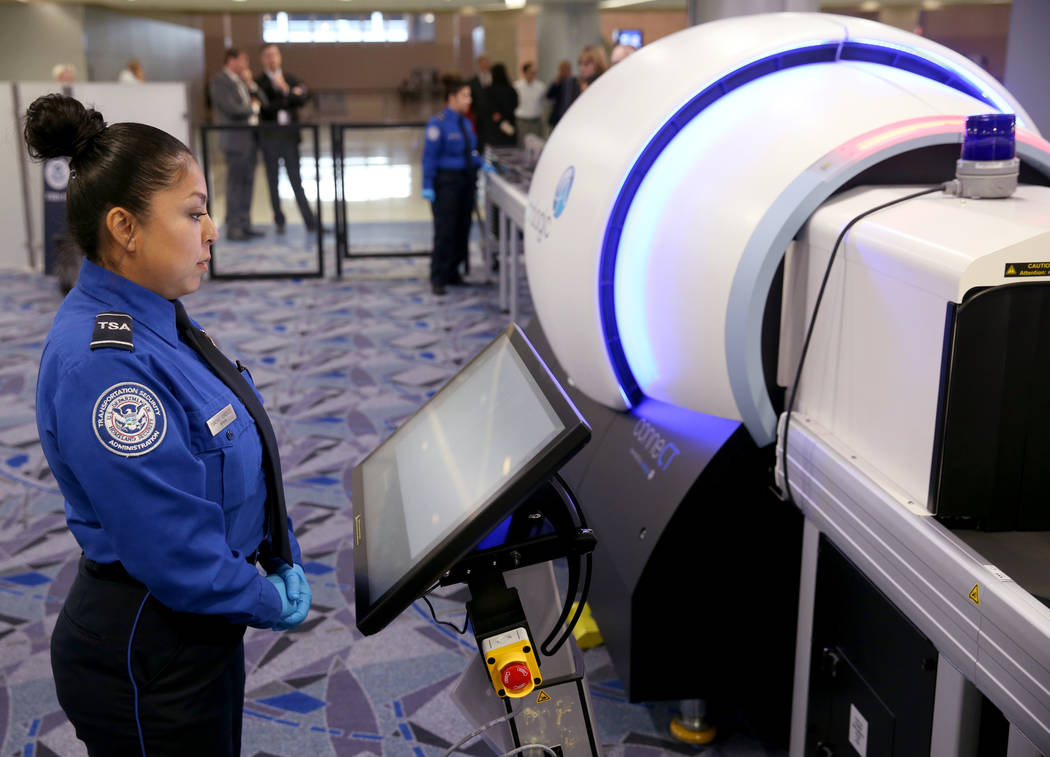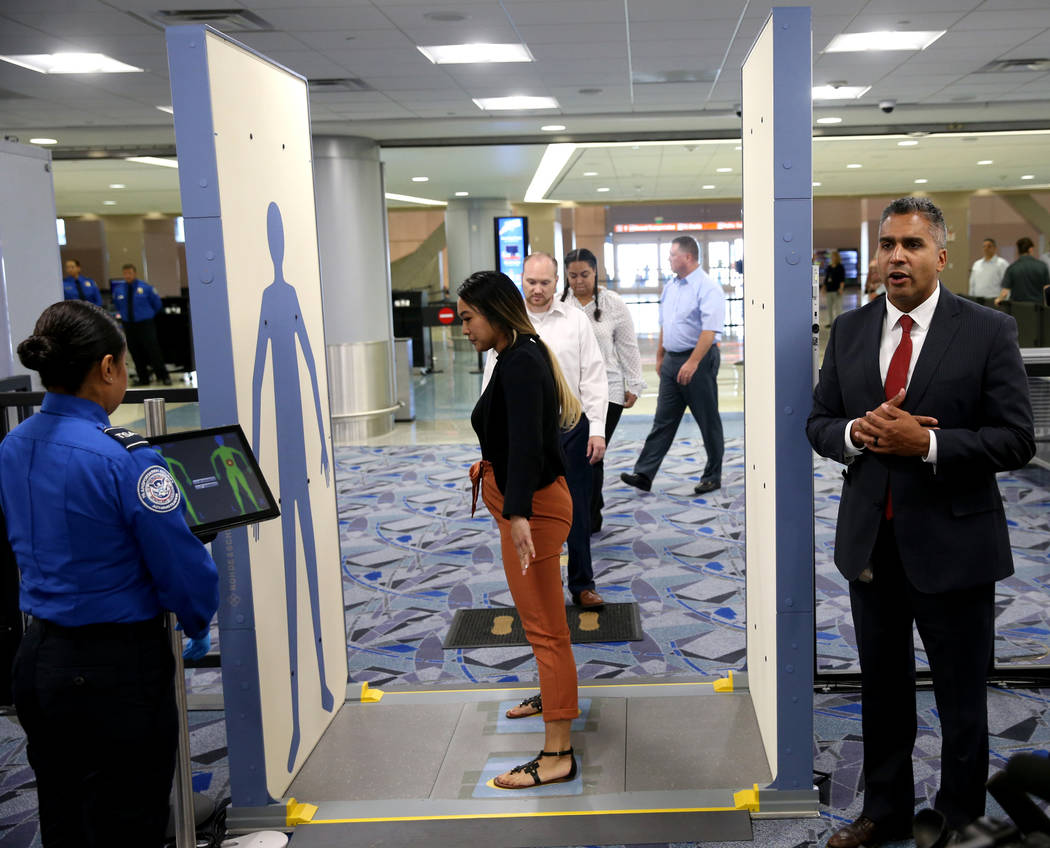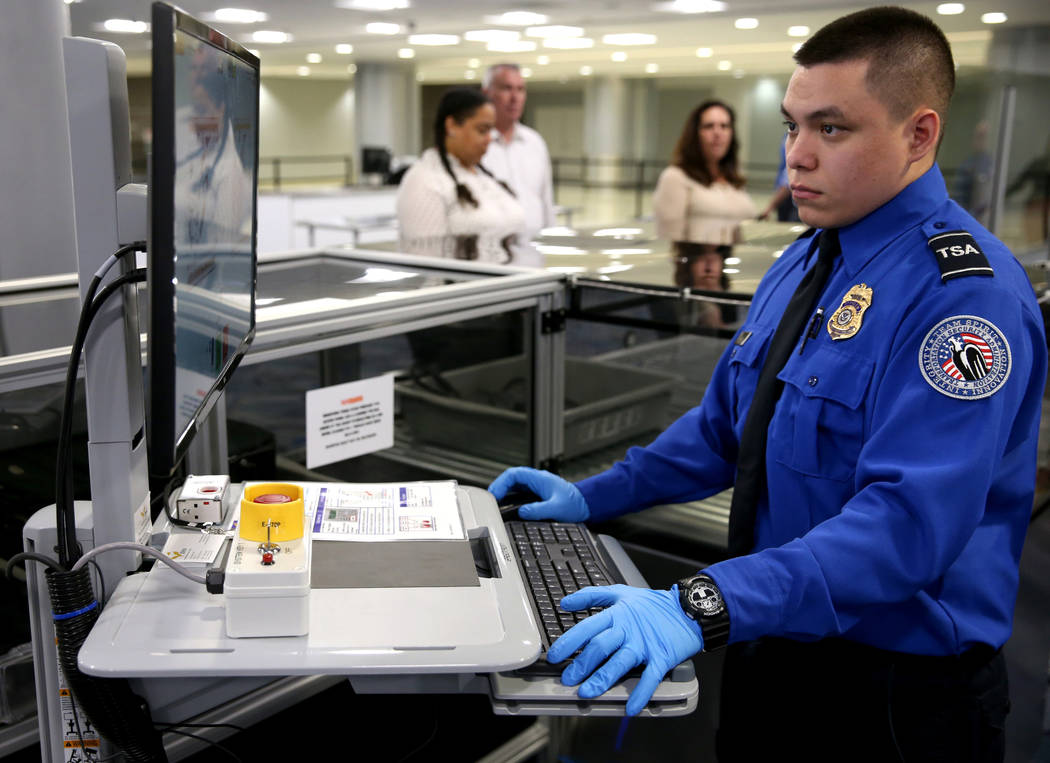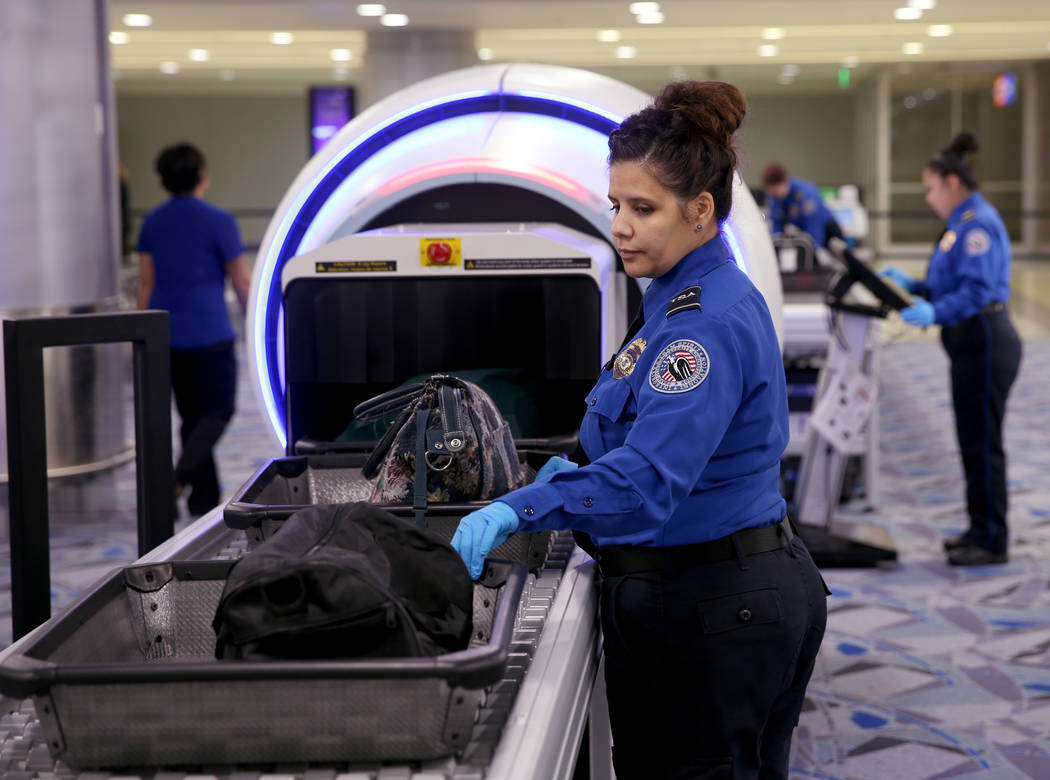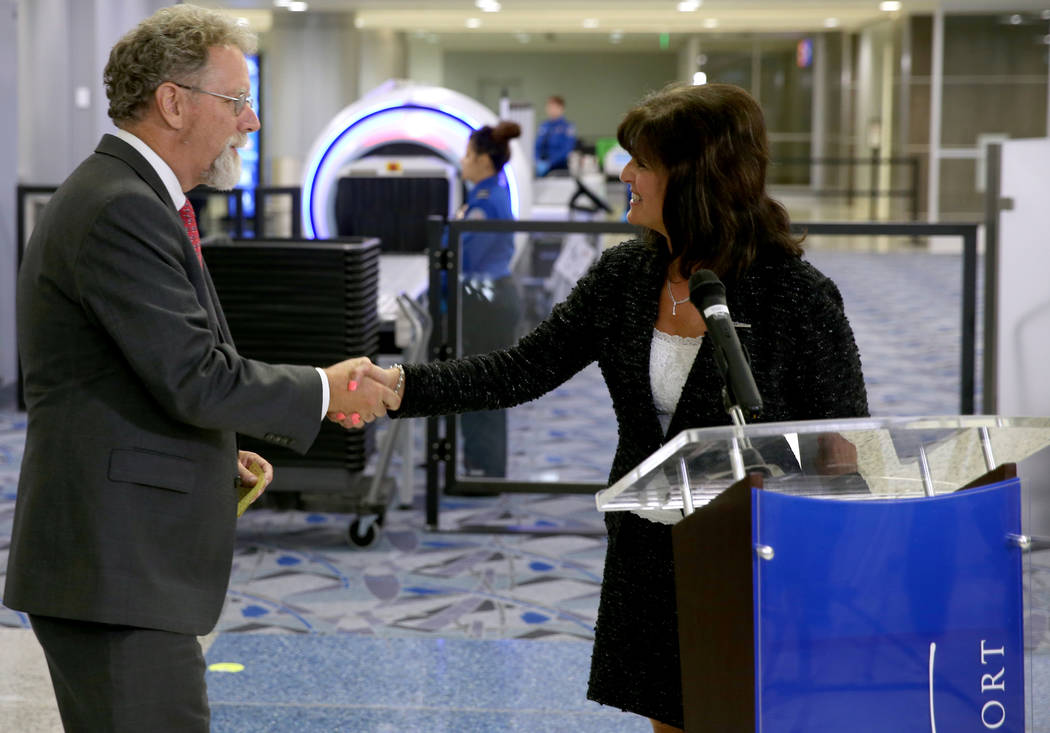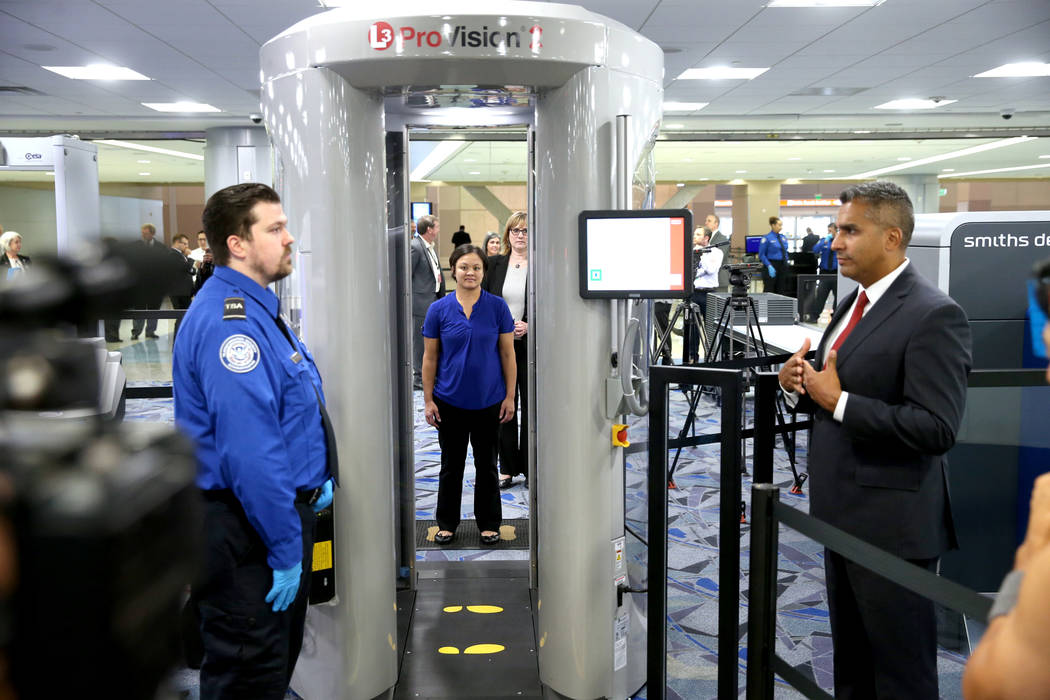Las Vegas’ McCarran airport tests security checkpoint of future
The latest airline security technology is being tested at Las Vegas’ airport.
Touted as the first of its kind, the Transportation Security Administration’s Innovation Checkpoint, located in Terminal 3 at McCarran International Airport, tests emerging security technologies in a live setting.
McCarran was chosen for the advanced checkpoint pilot program, which went live in June, because it is part of the TSA’s Innovation Task Force and because of the diversity of passengers who pass through the facility’s gates.
“We have a long history of partnering with the TSA on new initiatives and have often been the first to roll out new technologies here at this airport,” said Rosemary Vassiliadis, Clark County aviation director. “Las Vegas appeals to all walks of life. We see everyone from business travelers that fly several times a week, to leisure travelers who may only come to the airport once every couple of years. Our large volume of travelers and the frequency that we serve such a diverse mix of passengers makes McCarran the perfect incubator for the TSA’s latest endeavor.”
Partnering with United Airlines, the checkpoint only screens customers from 10 a.m. to 2 p.m. Sunday through Thursday to minimize the effect on customers, according to George Bieloszabski, United director and general manager of airport operations at McCarran.
“We’ve put over 14,000 of our customers through this test process,” Bieloszabski said. “It’s been an overwhelmingly positive response on the experience.”
McCarran has tested various technology as part of the Innovation Task Force, including facial scanning recognition testing that began last week and automated security checkpoints, which began as a pilot test and has since been permanently installed in other gates at McCarran.
The Innovation Checkpoint pilot program does not have an end date, according to Lorie Dankers, TSA spokeswoman.
The checkpoint tests four technologies — digital signage, credential authentication technology, computed tomography X-Ray scanners and advanced imaging technology.
CT 3-D scanners
Four different computer tomography scanners are installed in Terminal 3, with the ability to detect for explosives and other threats by creating a 3-D image for Transportation Security Administration X-ray operators to view.
One of the models, made by the Analogic Corporation, can take the 3-D image and pull, say, a laptop from inside the baggage, make it a separate image and rotate it, to allow for increased inspection. The item’s image can also be split into sections for increased analysis.
This eliminates a security officer from having to manually check some baggage, with only those needing further attention after an issue detected in the scan having to be hand-checked. Bags flagged for additional screening will be automatically diverted to a different section of the conveyor belt to be further evaluated by a security officer.
“It will allow the officer to have that 3-D capability, virtual capability, to be able to identify anomalies,” said Jose Bonilla, Innovation Task Force director. “It also auto-assists to help an officer identify an anomaly.”
TSA already uses CT technology to screen checked baggage and is just starting to incorporate it at the security checkpoint. The scanning technology can detect shapes and densities of items including bulk and liquid explosives that could be a threat to commercial aviation.
The new technology could lead to passengers being allowed to carry on larger containers of liquid than the current 3.4 ounces allowed and to keep their electronics in their bags at a checkpoint.
eAIT body scanner
Another aspect of the checkpoint is the Advanced Imaging Technology scanner used on passengers as they proceed through a checkpoint while their baggage is being screened.
The eAIT scanner allows travelers to have a more relaxed stance while being screened, moving away from having them hold their hands over their heads, to enable them to have their hands held just off their sides.
Compared to the current scanners, that are partially enclosed and feature moving parts, the eAIT scanner uses millimeter wave technology, allowing for the less restrictive process, featuring two walls, in an open-sided setting.
If an anomaly is detected on a person, the individual is sent over to a station to be searched by hand by a security agent.
CAT system
The Credential Authentication Technology (CAT) system allows for just a government-issued identification card to verify a passenger’s flight status.
The CAT system automatically checks the authenticity of the passenger’s identification card, while cross-checking with the Secure Flight Database to confirm the passenger’s flight information and vetting status. The passenger no longer has to present the officer with a boarding pass during this portion of the flight check-in process.
The process not only increases security with the automated check, but it also speeds up the process, as travelers won’t have to fumble for both their ID and boarding pass to hand over to a security officer.
“It gives the officer the automated capability to validate your access media, whether it be a license or a passport is authentic,“ said Jose Bonilla, Innovation Task Force director. “Today our officers do that manually and they see millions of IDs from various states, passports from throughout the world that they have to validate.”
The only time a boarding pass is requested to be shown is when the system is not able to access an individual’s boarding information.
Digital signage
Located near the line travelers wait in for the credential authentication station, digital posts with animated media alert passengers to the do’s and don’ts of traveling, and engage them in other ways.
From standard procedures to wait times, the signs are engineered to catch the traveler’s eye with animated steps, compared with standard printed signage.
“The goal here with our digital totem capability is engage passenger as best we can,” Bonilla said.
That engagement will take a step further in the future, as the ability to scan barcodes to join an airline’s frequent flyer club or get information to join the TSA’s PreCheck program among other uses, Bonilla said.
Contact Mick Akers at makers@reviewjournal.com or 702-387-2920. Follow @mickakers on Twitter.



